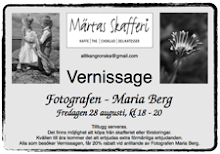Större hackspett.
The Great Spotted Woodpecker Dendrocopos majorIt is an inhabitant of woodlands and parks, depending for food and nesting sites upon old trees. Its actions are jerky, and it hops rather than climbs, leaping forward with one foot just in advance of the other. When a space is crossed the flight is easy and undulating.
The food mainly consists of insects and grubs but also seeds, fruit, scraps, eggs, chicks and small rodents. The woodpecker usually alights on the trunk, working upwards, from side to side, but sometimes will perch in passerine style, when it sits well upright. During the ascent it taps the bark, breaking off fragments, but often extracts its prey from crevices with the tip of its sticky tongue. Beechmast, acorns, nuts and berries are eaten when animal food is scarce.
The creamy-white eggs, five to seven in number, are laid in the second half of May. The young cluster at the mouth of the hole and keep a continuous chatter when the parents are feeding them, but when alarmed slip back into the hole. The nest hole is rarely used again, but not infrequently other holes are bored in the same tree.
Födan består av skalbaggar, myror, bladlöss och andra insekter, samt bär som till exempel blåbär och lingon. Den större hackspetten uppsöker gärna fågelborden under vintern.
Den lever främst i löv- och blandskog, ibland även barrskog, från Skåne till Lappland. Längst i norr är den mindre vanlig eller sällsynt.
Och jag fick den på bild igår vid ett fågelbord och jag bor i Halland.
Bird freak 74
Bergfink,
The Brambling,
Fringilla montifringillaBramblings mostly eat seeds, but unlike most finches, their young are fed largely on insects.
It builds its nest in a tree fork, and decorates the exterior with moss or lichen to make it less conspicuous. It lays 4-9 eggs.
This species is almost entirely migratory. In Europe, it forms large flocks in the winter, sometimes with thousands or even millions of birds in a single flock. Such large gatherings occur especially if beech mast is abundant. Bramblings do not require beech mast in the winter, but winter flocks of Bramblings will move until they find it. This may be an adaptation to avoid competition with the Chaffinch
Do you see the shadow?
Bergfinken liknar bofinken och skiljer sig från den främst genom sin vita bakrygg. Hannen har (på sommaren) huvudet, bakhalsen och främre delen av ryggen svarta, strupen, bröstet och skulderfjädrarna rostgula; de övriga undre kroppsdelarna vitaktiga. Honan har huvudet och nacken ovan askgrå, strupen och bröstet rostgula med grå anstrykning. De övriga undre kroppsdelarna är ljusgrå. Båda könen blir ungefär 16 cm långa och väger ungefär 25 gram.
Dess sång är ganska monoton och för människan inte så njutbar som bofinkens. Man kan jänföra sången med grönfinkens enstaviga "bräkande", men med mer kraft och schwung i det. Ornitologen Erik Rosenberg såg det som en liten cirkelsåg i verksamhet.
Under vår-och höststräcket kan man se stora flockar med bergfinkar som rör sig på ett märkligt rullande sätt över stubbåkrar och fält. Rosenberg kallade det här för "bergfinkstraktorn", beroende på att sista ledet då och då flyger upp och tar täten.
Shadow Shot Sunday nr 88
http://onesingleimpression.blogspot.com/ - You need sunny days to take shadow shot!
With help from Wikipedia!












